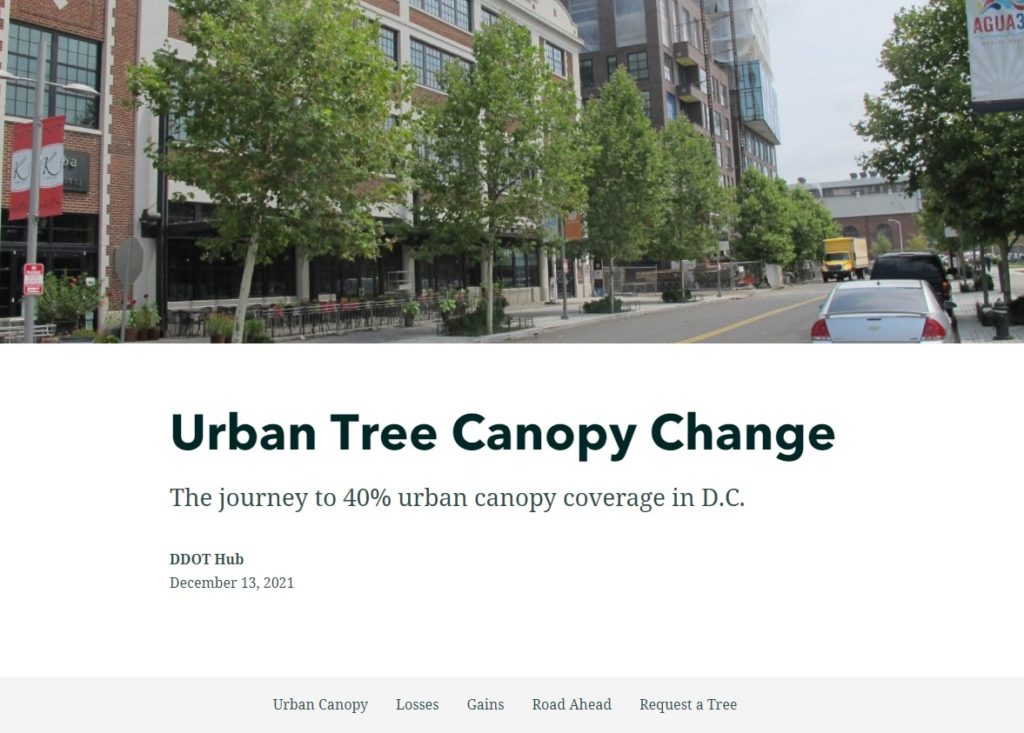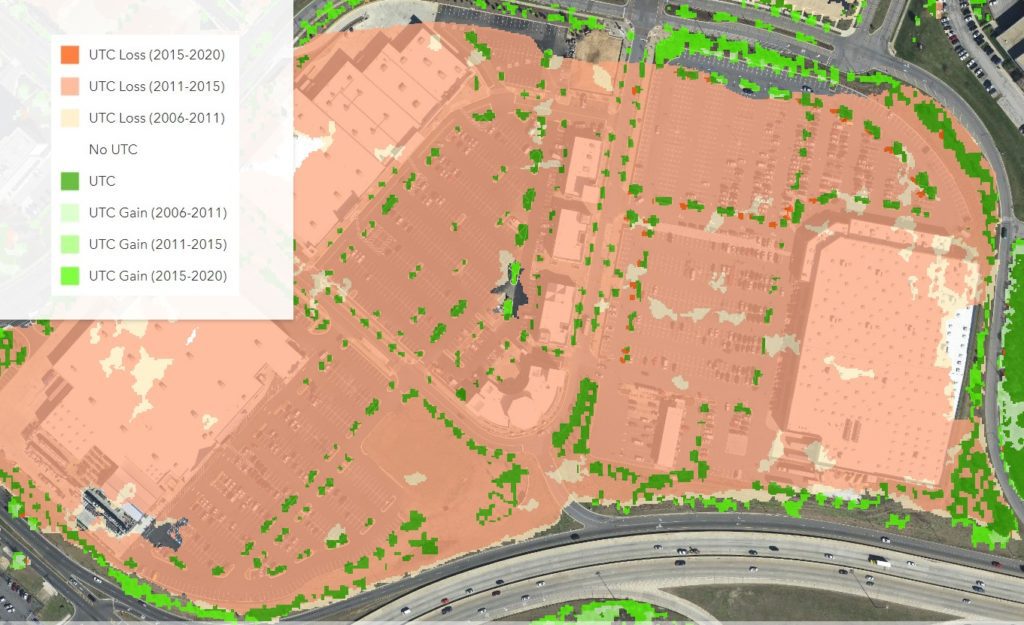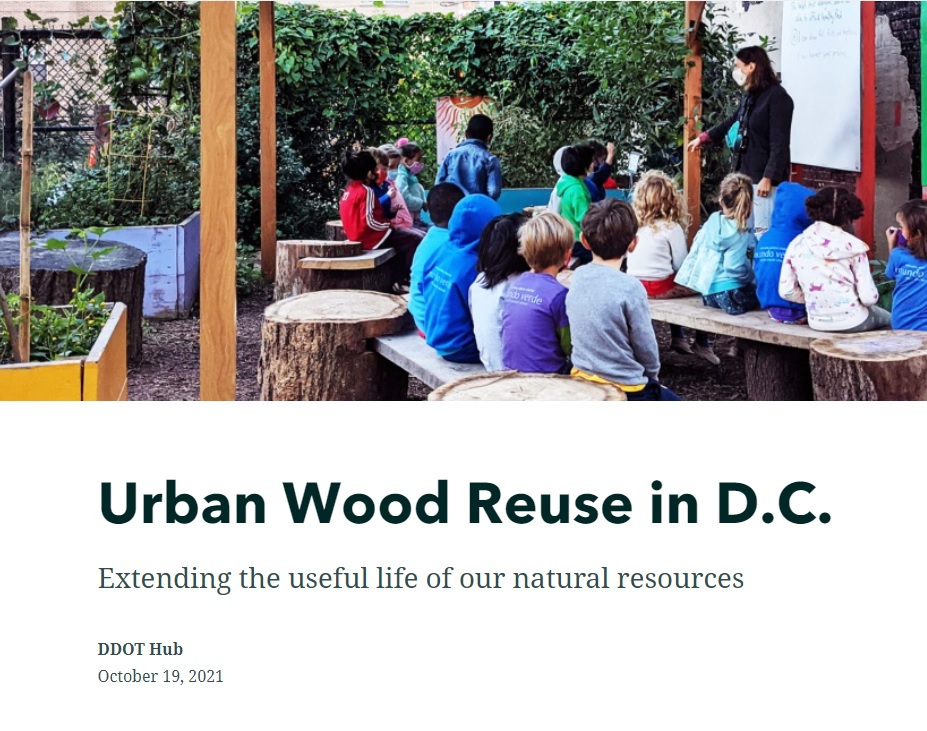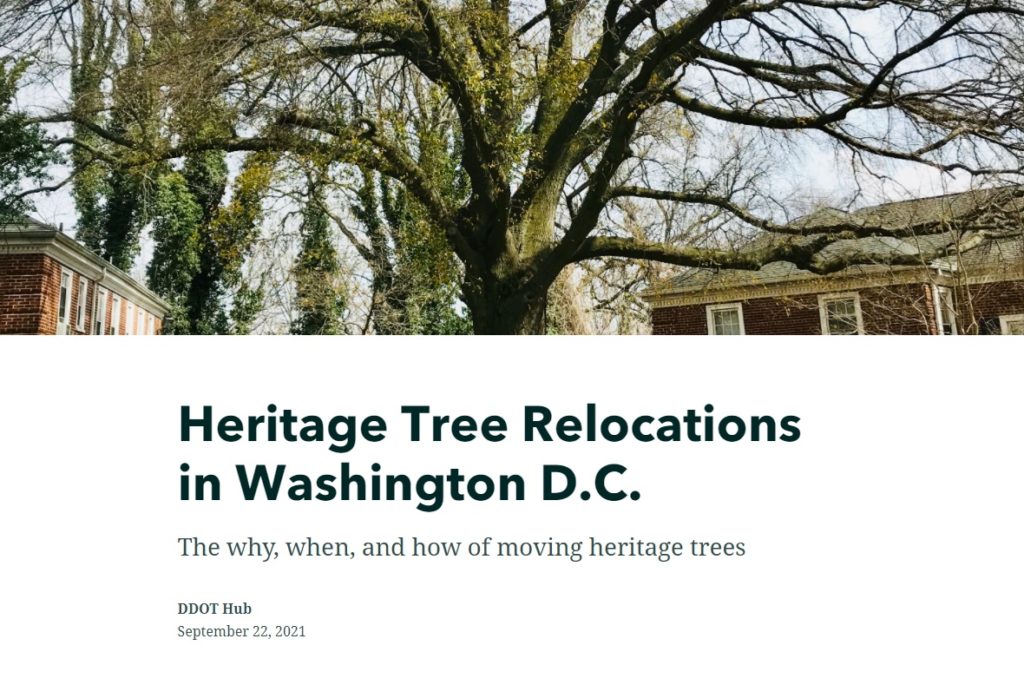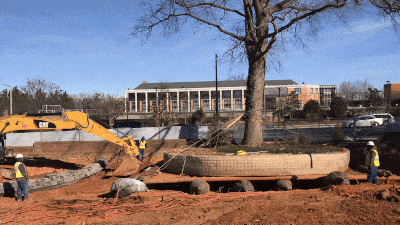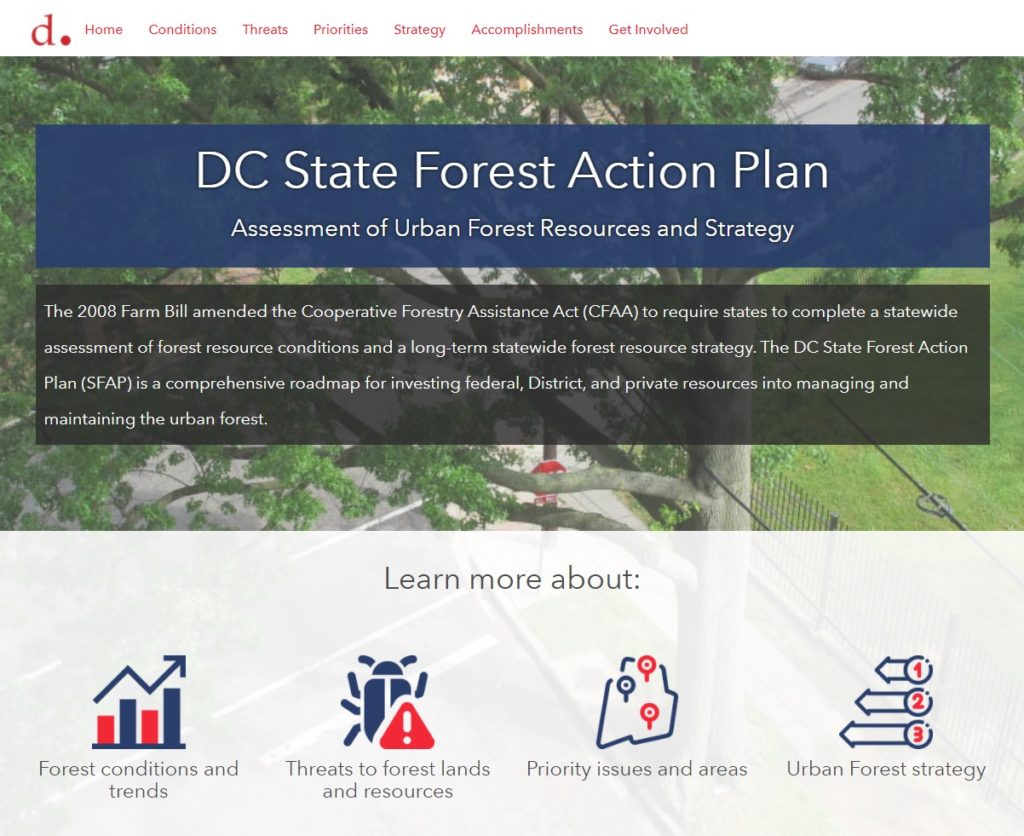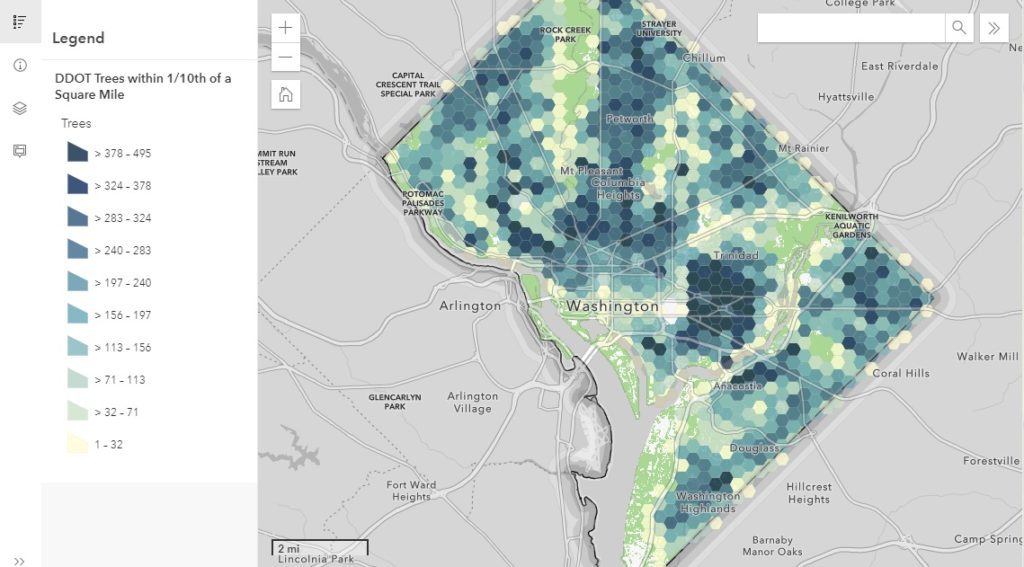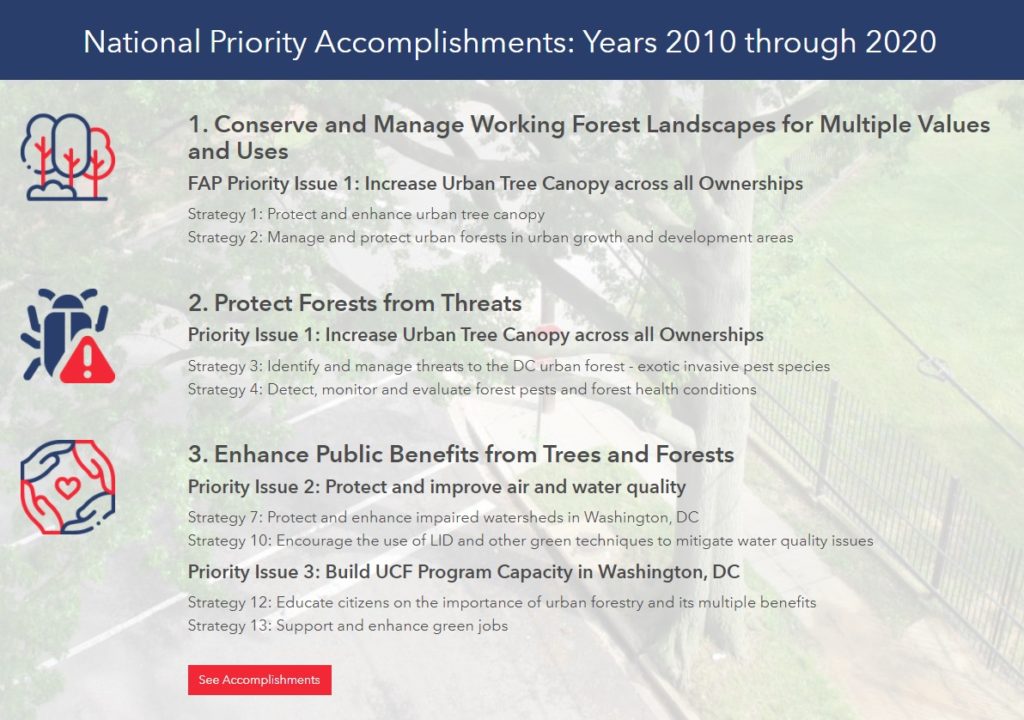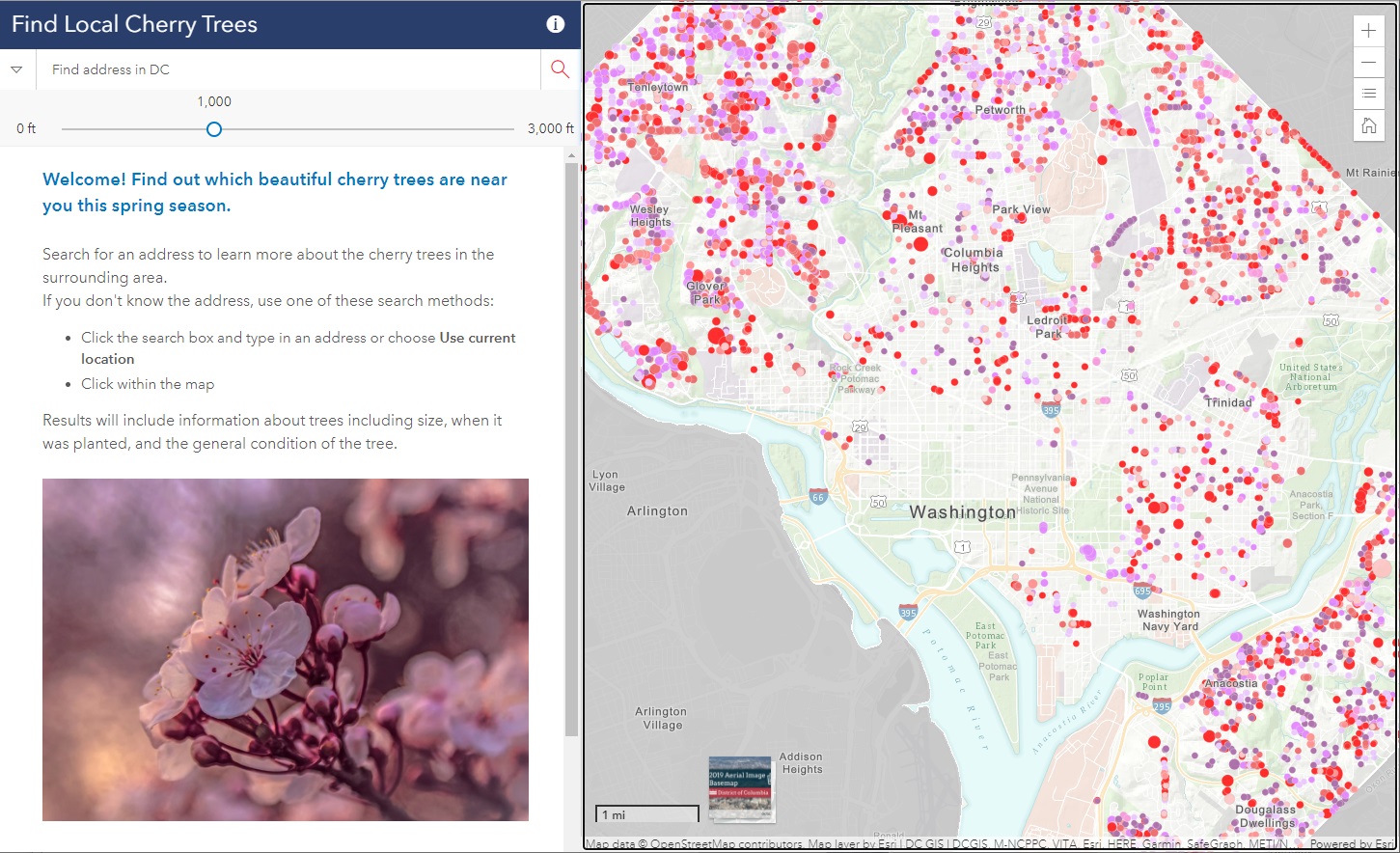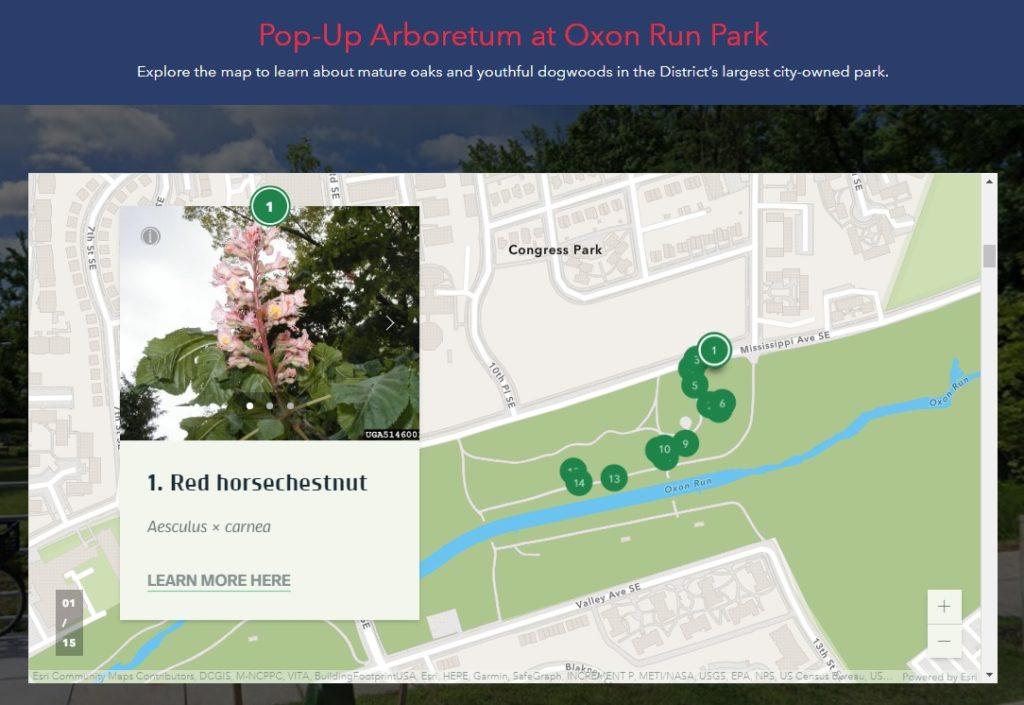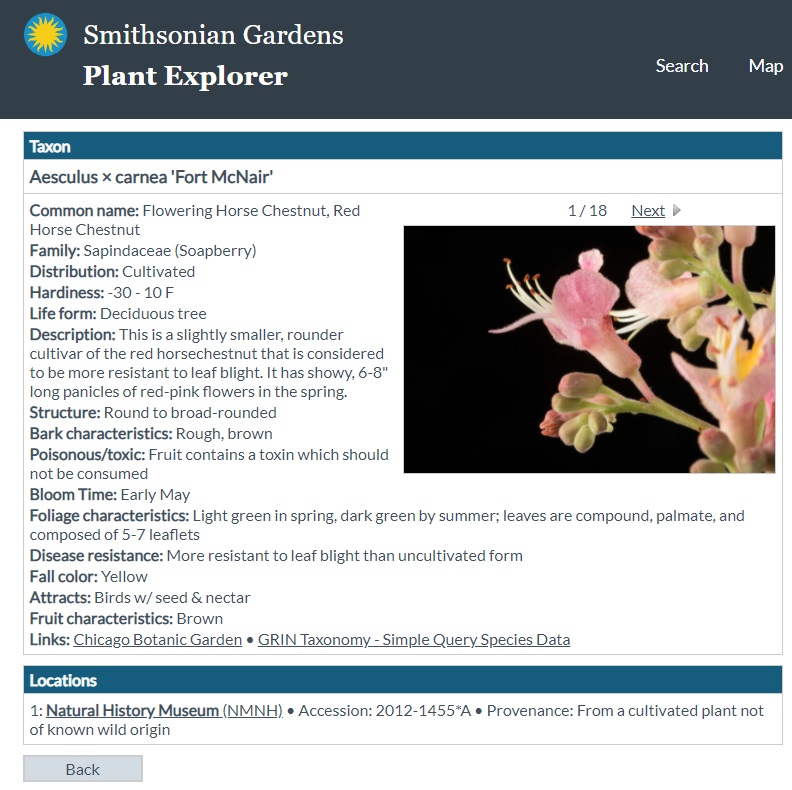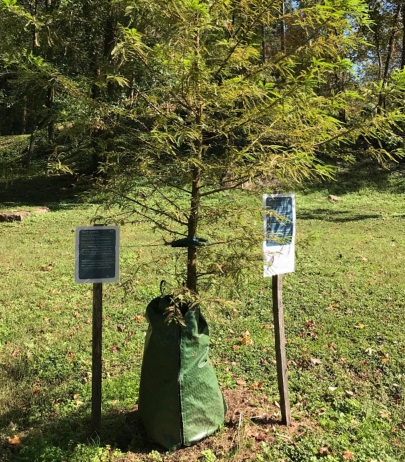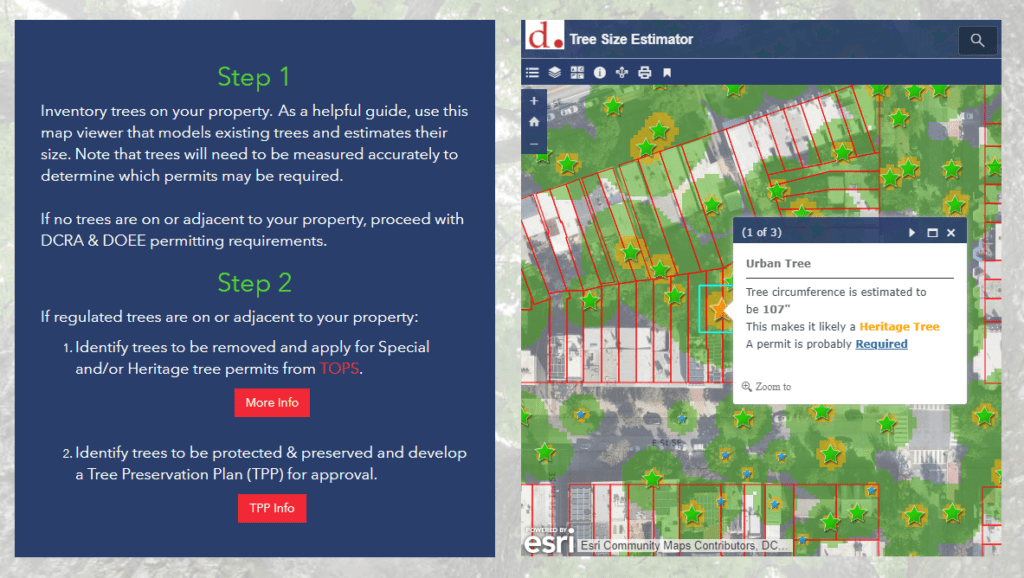DDOT’s Urban Forestry Division (UFD) is the primary steward of Washington, D.C.’s ~175,000 public trees and has a mission of keeping this resource healthy, safe, and growing. Among many other benefits, these trees improve our air and water quality, cool our neighborhoods, and provide critical habitat for many animals. While D.C.’s Urban Tree Canopy (UTC) is already at an impressive 38%, the UFD has a goal of 40% by 2032. To learn more about the gains and losses experienced during the journey to 40%, SymGEO recently partnered with the UFD to create a StoryMap that explores example areas throughout D.C. and lays out the steps needed to reach the 40% canopy coverage goal.
This mobile-responsive story begins with an overview of the current canopy coverage in DC and explores select examples detailing areas of loss and areas of gain.
Areas of loss are typically due to commercial developments, new residential developments, supporting road and transportation infrastructure, or individual tree loss due to natural causes or storm damage. 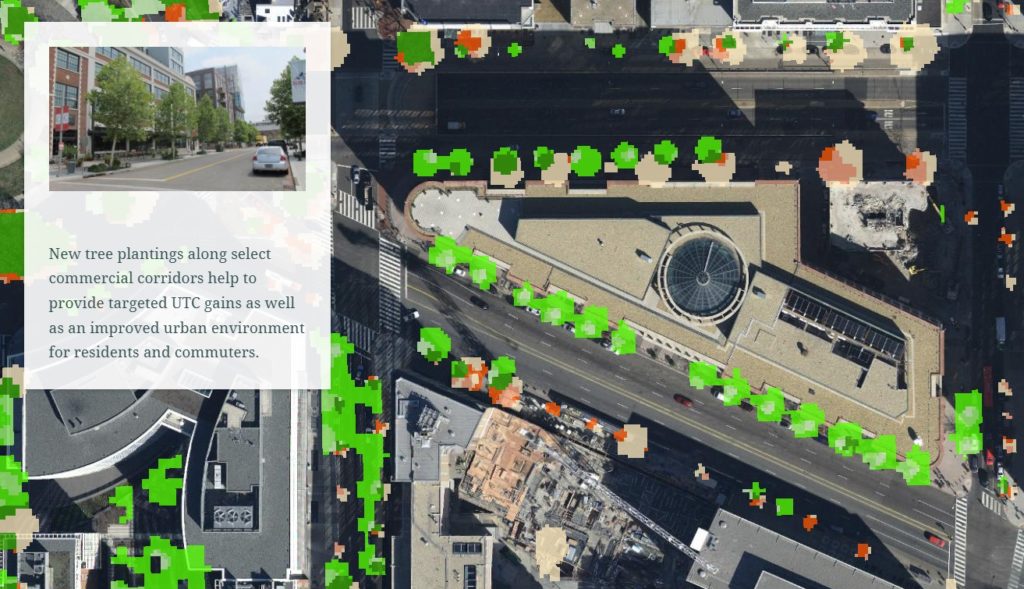
Areas of gain can be attributed to plantings along commercial corridors, or in new residential developments to help alleviate the urban heat island effect, or due to the natural growth of trees over time.
Finally, a call to action is made for homeowners to request their own free shade-providing tree, or to report an open planting box ready for a new tree.
Talk to SymGEO industry experts today if your agency or organization is interested in community engagement with the power of Esri’s ArcGIS StoryMap technology – we are a certified Esri business partner and are here to help.
